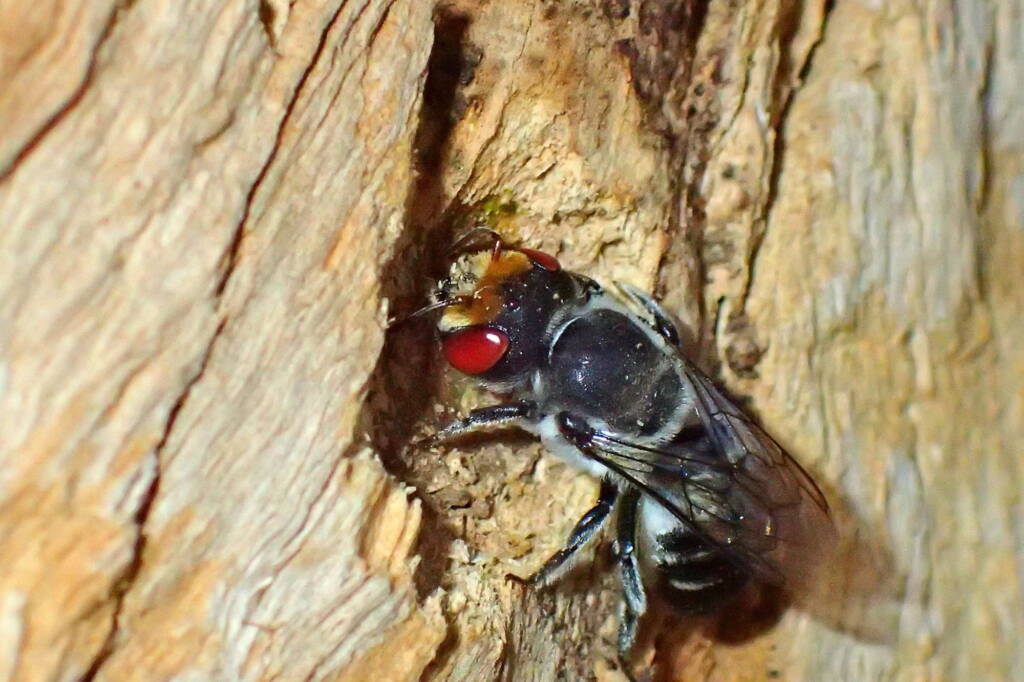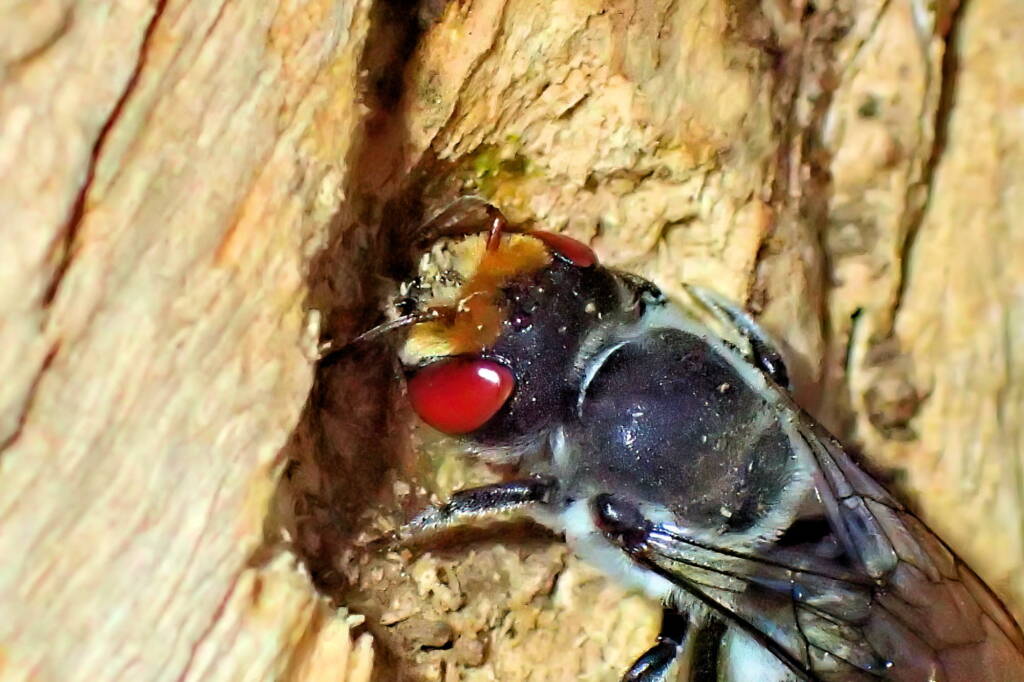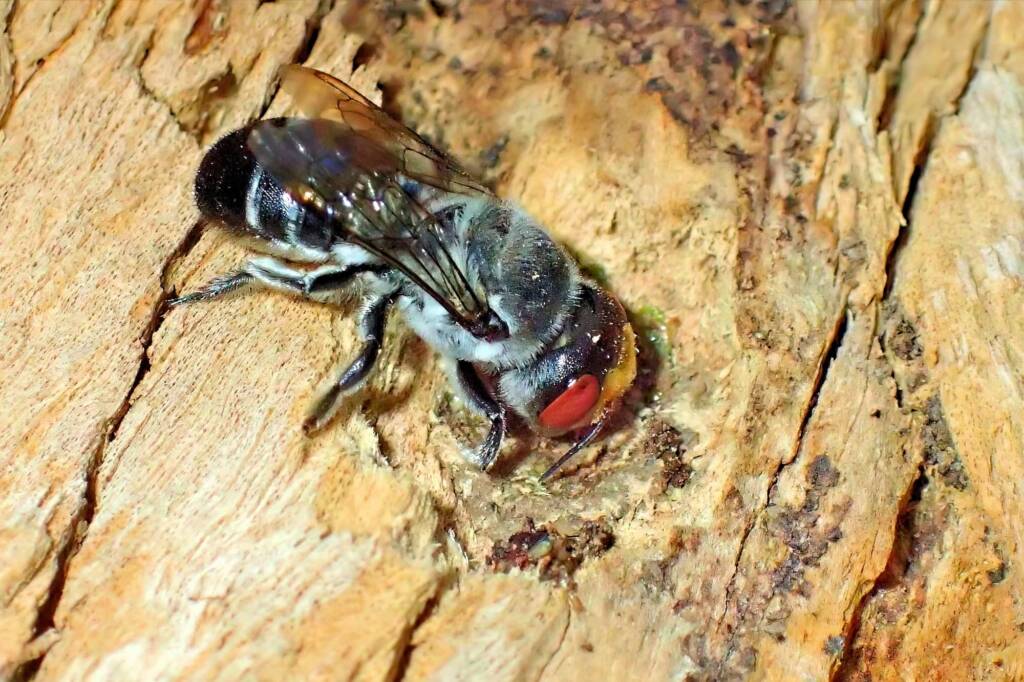Author Gary Taylor ◦
The unmistakable eyes of Megachile aurifrons, also known as the “Golden browed resin bee” (‘cos that’s what really stands out with this bee isn’t it… 😄).
The bee in the following pic with the yellow and red eyes is the male, the other two pics are a female nesting in my BeeTown. But did you know that bees actually have five eyes?

Yep, those three little bumps on the top of their head are eyes too. They’re called ocellus, or “simple eyes”. Ok, so backing up a bit here, you’ve probably heard of the term “compound eyes”, they’re the ones we all recognise as eyes… They’re called “compound” because each one is made up of thousands of individual lenses, all at a slightly different angle to the others which give the bee an overall image of it’s immediate surroundings.

But they’re not so good with distance, basically speaking, they’re short sighted. So how do they navigate over long distances so well and avoid predators? Well that’s where the “simple eyes” come in. Each simple eye has only one lens and their function is basically to detect light and dark. A bit like the light/motion sensor on your security system, but with a memory. It can’t tell the difference between a moth fluttering around up close to it and something large like a person further away, it only knows by the sudden change in the light pattern that there’s something there (which is why it’s so hard to sneak up on them).

As for navigation, as anyone who knows a bit about mapping will tell you, to do it accurately requires triangulation, which is why bees have three of these “simple eyes”. It not only allows them to map their surroundings accurately but also track the movement of the sun in relation to the horizon at the same time for perfect orientation of where they are at all times.

But what about cloudy days? And how do they see flowers if their eyesight isn’t so great? Well, bees don’t see the same colour spectrum as we see… They see in the lower end of the spectrum, the green, blue, violet and even ultraviolet end, so they can still see the sun’s ultraviolet rays through the clouds and is also why bees like blue flowers so much. And here’s the really cool bit, although we can’t see it without ultraviolet detection gadgets, a lot of flowers that attract bees (but aren’t blue) have developed ultraviolet markers on their petals which to the bees look like neon signs pointing to the nectar on offer.
And I think to myself, what a wonderful world…

